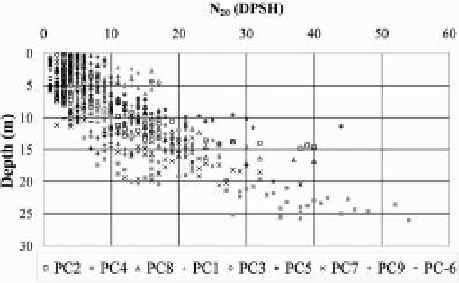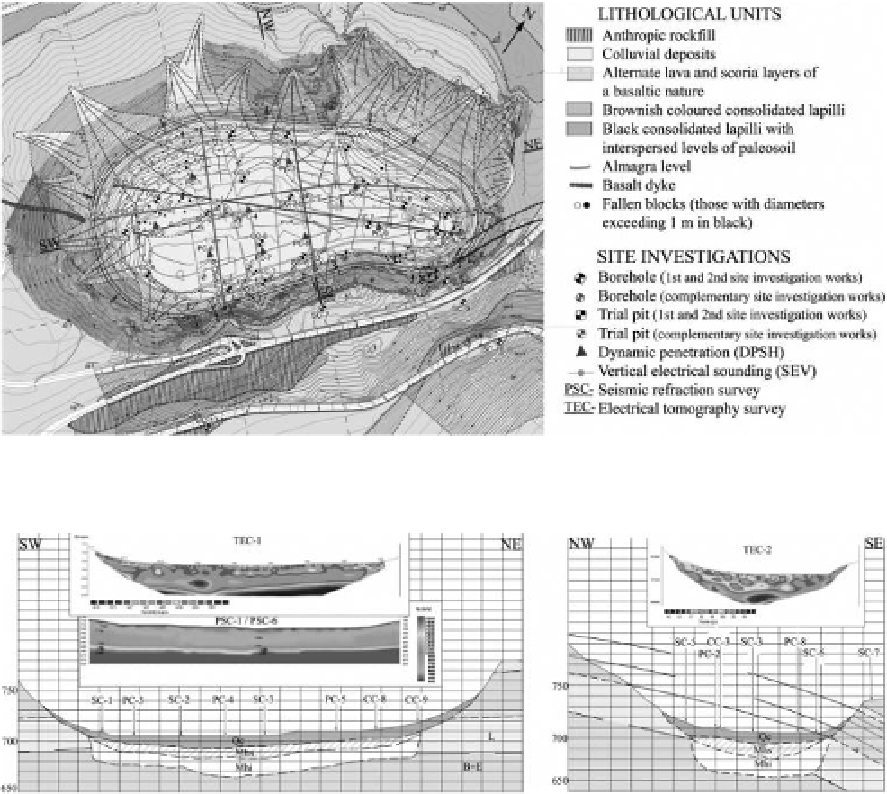Environmental Engineering Reference
In-Depth Information
Figure 2.
Geological plant of the upper reservoir showing the location of the site investigations carried out.
Figure 3. Geological profiles of “la caldera” (B+e, basaltic lava and scoria layers; l, consolidated lapilli; Mh, fill
material; Qc, colluvial deposits).
rejected because of the impossibility of avoiding
potential basaltic blocks or scoria nodules embed-
ded in the loose material.
- carrying out dynamic compaction, an ideal
treatment for this type of granular ground,
with fragile soil particles and a large volume of
voids. however, in order to reach down to the
30 m of material to be treated, impact energies
in the order of 1600 t⋅m would be necessary. it is
for this reason that, although the method could
be very efficient and appropriate from a techni-
cal point of view, the unavailability of a large
enough crane on the island of el hierro meant
that this solution was rejected.
- carrying out pre-loading; this treatment is a
good solution, as it reduces and homogenises
the settlement, provided that the material does
not exhibit a markedly elastic behaviour.
in view of the above considerations, the chosen
solution was pre-loading. The surface to be pre-
loaded has an area of 40,000 m
2
, which requires
Figure 4.
Values of the n
20
index with depth.
4.2
Treatments analysed and solution proposed
Different treatments were evaluated to correct the
settlement:
- The execution of stone columns (of gravel) sup-
ported on the basaltic layer; this treatment was
















